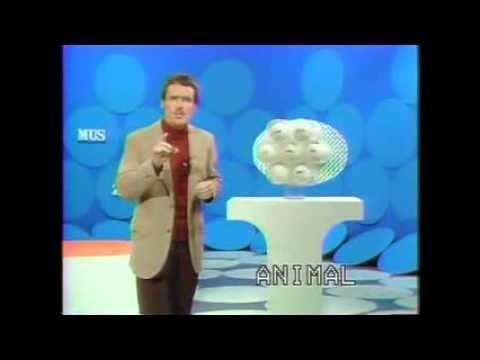 | ||
Wordsmith is a thirty-part instructional television series about the English language. It is meant to help students expand their vocabulary through analyzing the parts of English words. It is meant for classroom use, either through direct broadcast or through videotapes recorded from the airings by teachers or other school district personnel. The host is Bob Kupa'a Smith.
Contents
Production
Two series of Wordsmith were made. The first, in black and white, was filmed at KQED studios in San Francisco in 1964-1965, and was originally at fifth grade elementary school students. Joanne Mock was the producer/director. It was distributed by the National Center for School and College Television (now called the Agency for Instructional Technology, or AIT). The show was largely improvised by host Bob Smith.
Ten years later, the series was remade in color (partly because the original tapes were wearing out), and completed in 1975. It was also distributed by AIT, the Agency for Instructional Television. The executive producer was Gordon Hughan. The producer-directors were Glenn Johnson and Karen Hamamura Nelson. Its target audience ranged from middle school to high school students. It was recorded at the Studios of KLCS, Channel 58, which was owned and managed by the Los Angeles Unified School District. This second series is the one generally viewed today, and individual programs are still (in 2011) available for purchase from AIT.
Format
Each 15-minute episode focuses on a related group of word cells, most of which derive from the ancient Greek and Latin languages. "Word Cell" is a term invented by series host Bob Smith as a more user-friendly alternative to terms like "prefix," suffix" and "root word," all three of which are included in the concept "Word Cell." Bob wore the large-frame glasses and striking clothes of the era.
Each program consists of a series of scenes, some taking place in the studio, and some filmed elsewhere. There are a variety of characters that act out or comment on the words featured in the episode. There are several recurring characters, portrayed not by actors but by framed portrait drawings, including Mr. Homonym, who knows what he means, but not which spelling to use, and Ms. Onomatopoeia, Ms. Hyperbole, and Mr. Alliteration.
The word cells appear in the form of circular plastic-foam balls. When cracked open, they reveal the meaning inside. Once displayed, they get tossed down a clear plastic tube, to the accompaniment of a slide whistle sound, to reach an unknown end.
There are also tests that go with the given vocabulary to reinforce memory.
Episode content
The episodes can be viewed in any order. The following list only includes the highlights and main word cells of each episode:
1. Sound Stereo, Audi, Son, Stentor, Decibel, Phon, tintinnabulation
2. Body I Manu, Dent, Capit, Pod, Ped, Derm, Opt, Hand, Sesqui, sinister, dextr, gauche
3. Body II Ocul, Cap, Corp, Derm, Opt (Ophth), Head, Dent, Cyclops
4. Fire Ign, Torr, Pyr, Therm, Helio, Flam, Sol, Holocaust, inferno, in, barbecue
5. Looking Spec, Scope, Vid (Vis), Orama, Iris, Roy G Biv
6. Numbers I Bi, 2, tw, mono, 1, uni, (unicorn)
7. Numbers II Pan, Poly, Multi, Ambi (Amphi), Googol, Semi, Hemi, Half,
8. Numbers III 100, cent, Dec, Quadr, Quart, 4, tri, triskaidekaphobia, trivia, square, all,
9. Walk and Run Gress, Grad, Cur, Drom, Fug, Ambul
10. Water Aqua, Mar, Flu, Sea, Und, Hydr, H2O, Hydra, diluv, antediluvian
11. Time Pre, Post, A.M., P.M.,chron, temp, daisy
12. Cutting Tom, sect, guillotine, atom, cis, ec, nostril
13. Animals I pecu, anim, can(cyn), mus, -ine, goose bumps, dandelion, zo, Kangaroo, impecunious, parroting, ferret, badger,Cancer, Taurus, Ares, Pisces, Leo, Scorpio, Capricorn,
14. Animals II bio, anim, drom, greg, skunk, gnu, hippodrome, gaggle, school, flock, herd, swarm, pack, colony, pride, leap, gam, crash, piggy bank, monkey wrench, etc.
15. Serendipity serendipity, volcano, Asian characters, English logograms, atom, water idioms, Anatomy, Avocado, Mark Twain
16. Nature earth, geo, nat, aaron, navidad, terr, eco (oiko), bio, Copernicus, Galileo
17. Leading duc, agog, pedagogy, crat, cracy, reg, pop
18. Transportation I mov (mob), pilgrim, itinerary, taxi, mot, canoe, sail, sale, Ms. Hyperbole, horse-hippodrome again.-dromedary
19. Transportation II peregrination, port, it, auto, ski, sport, fug,
20. Position sta, pos, sed, couch, davenport, sofa, chesterfield, divan, side, Ms. Hyperbole,
21. Form lic (ly), morph, form, gon, platypus, metamorphosis, egg, Ms. Hyperbole, Mr. Redundant,
22. Size min, equ, equilibrium, mega, magn, Mr. Alliteration, sighs, Charlemagne, Procrustes, Mr. Redundant, pneumonoultramicroscopicsilicovolcanoconiosis, ushers
23. Talking loqu, echo, ventriloquist, log, dict, allowed, Mr. Alliteration,
24. Potpourri potpourri, carob, carat, Mr. Alliteration, Camelia, Ohm, Ampere, Volt, Nickname, Meander, Versus,
25. Food carn, coct, herb, omni, vor, sal, chili, sandwich, pancakes, griddlecakes, hotcakes, battercakes, flapjacks
26. Twist and Turn vers, vert, contortionist, trop, Philadelphia, tor, Ms. Hyperbole, wring, tropaion (trophy), versus, nasturtium,
27. Relatives mother, ped, pater, mater, Mr. Alliteration,
28. Connection together, con, syn, her, (gather), pan, co-op, interdigitation, concatenation, tide, Macadam,
29. Measure and Metrics score, hectometer, milli, odometer, meter, foot, hand, ell, hug (fathom), sighs, score, mile,
30. Communication television, scrib, tele, med, graph, her, tattoo, googol, buncombe (bunk)
